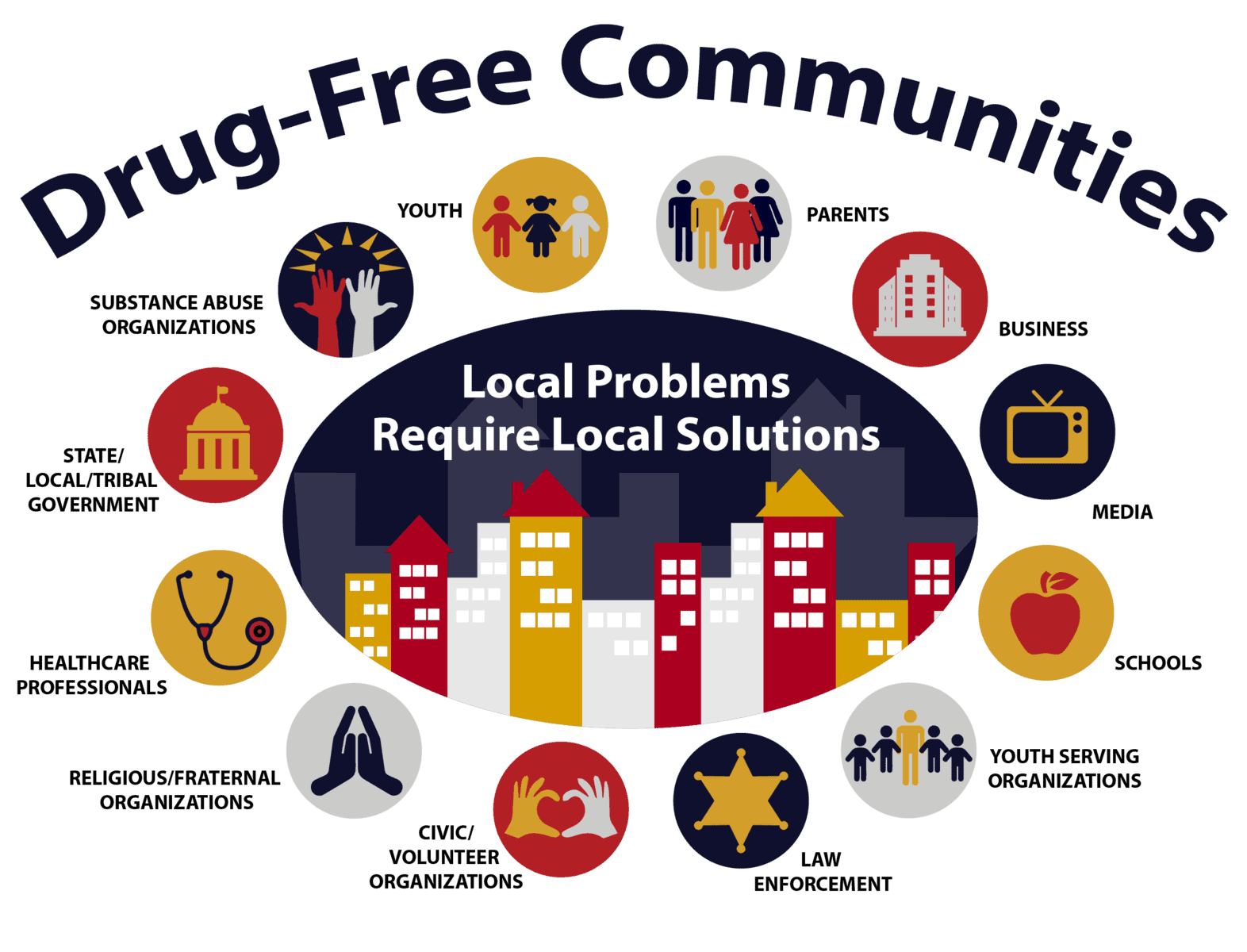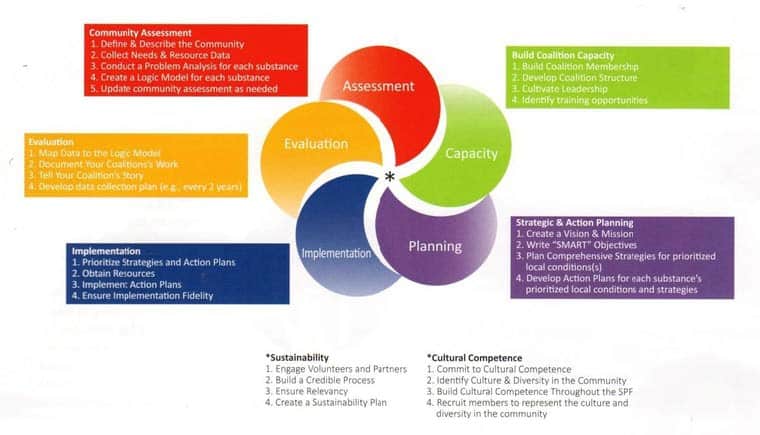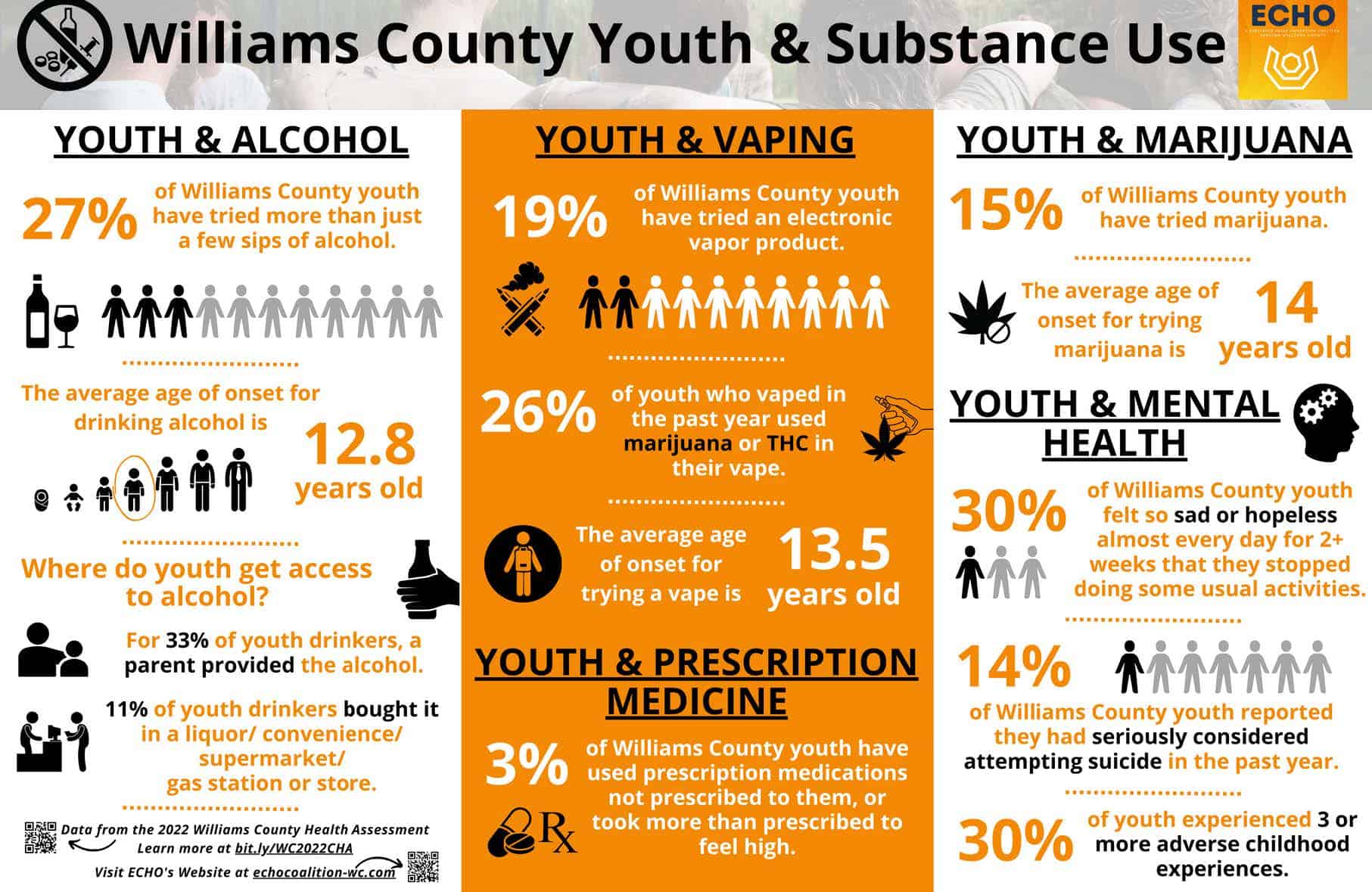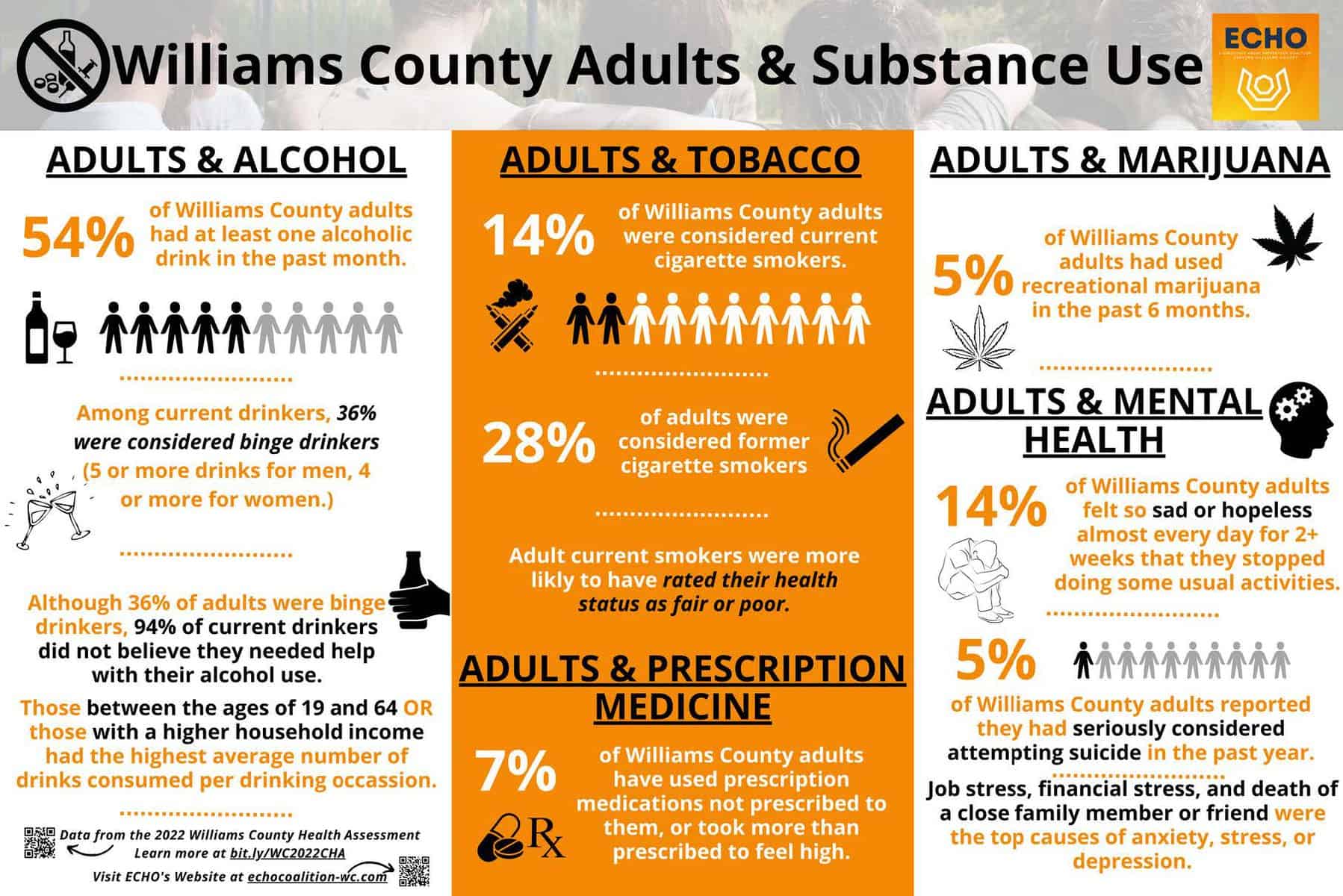Educating Communities on Health Opportunities
What is the ECHO Coalition?
Mission
ECHO (Educating Communities on Health Opportunities) will promote and advocate for healthy lifestyles free from substance abuse in youth and adults throughout Williams County.
Vision
Wellness and healthy lifestyles free from substance abuse across the lifespan of Williams County residents.
ECHO Coalition History
In 2021 we were awarded the Drug Free Support Program. The DFC support program funds community-based coalitions that engage multiple sectors of the community to prevent youth substance use with these goals in mind:
1. Establish and strengthen collaboration among communities, public and private non-profit agencies; as well as federal, state, local, and tribal governments to support the efforts of community collations working to prevent and reduce substance use among youth.
2. Reduce Substance use among youth and overtime, reduce substance abuse among adults by address the factors in a community that increase the risk of substance abuse and promoting the factors that minimize the risk of substance abuse.
Timeline & Accomplishments
2021
- Applied & received the DFC Grant Funded a full-time staff member
- Implemented Youth-led programming
- Website created
*DFC Funding was awarded in 2021
2022
- Coalition Members & Staff attended National Coalition Academy (NCA)
- Youth-led programming expanded
- Improved Coalition communication
2023
- ECHO Coalition graduated the NCA
- ECHO participated in the Beyond the NCA
- Pioneered a Youth Leadership Council
- Created the Strategic & Action Plan
How is the Coalition funded?
Goals
Collect behavioral health indicator data related to youth substance abuse (i.e., alcohol, drugs, tobacco, and vaping) and assess the need for community-based prevention programming.
Ensure access to a substance abuse prevention system to support youth and their families.
Foster alignment and planning of community-based substance abuse prevention services for youth and their families.
Implement evidence-based substance abuse prevention services to improve the behavioral health and well-being of youth and their families.
Analyze, evaluate and determine the impact of evidence-based youth substance abuse prevention efforts.
Coming Together to Collaborate
The ECHO Coalition is comprised of 12 different sectors of the community. The 12 sectors provide a unique perspective on the need for prevention in the Williams County community. The 12 sectors include parents, youth, schools, religious organizations, healthcare professionals, media, businesses, law enforcement, government, youth-serving organizations, substance abuse organizations, and civic/volunteer organizations.

What is the Drug Free Communities Support Program?
The Drug Free Communities Support Program (Drug Free Communities grant – DFC) is the nation’s leading effort to mobilize communities to prevent and reduce substance use among youth. The DFC program is aimed at mobilizing community leaders to identify and respond to the drug problems unique to their community and change local community environmental conditions tied to substance use. To learn more, visit: https://www.cdc.gov/overdose-prevention/
The primary purpose of the DFC program is to:
- Establish and strengthen collaboration among communities, public and private non-profit agencies; as well as federal, state, local, and tribal governments to support the efforts of community coalitions working to prevent and reduce substance use among youth.
- Reduce substance use among youth and, over time, reduce substance abuse among adults by addressing the factors in a community that increase the risk of substance abuse and promoting the factors that minimize the risk of substance abuse.
Drug Free Community Grant Goals:
- Reduce 30-day past use of substances.
- Increase perception of harm of substances.
- Increase perception of peer disapproval.
- Increase perception of parental disapproval.
How does the Coalition set strategies?
Drug Free Communities utilizes the Strategic Prevention Framework. The Strategic Prevention Framework (SPF), includes community assessment, logic models, comprehensive strategies, coalition evaluation, and coalition capacity building. The SPF aids prevention coalitions in assessing, capacity building, planning, implementing, and evaluating their community change efforts to reduce substance misuse. To learn more, visit: SAMHSA

The DFC Coalition focuses on environmental changes to prevent substance use in the community. The environmental changes fit into seven different strategies listed below. DFC coalitions decide which strategies to utilize based on data gathered from their specific communities.
Seven Strategies to Affect Community Change
- Provide Information – Educational presentations, workshops or seminars, and data or media presentations (e.g., public service announcements, brochures, billboard campaigns, community meetings, town halls, forums, web-based communications).
- Enhance Skill – Workshops, seminars or activities designed to increase the skills or participants, members and staff (e.g., training, technical assistance, distance learning, strategic planning retreats, parenting classes, model programs in schools).
- Provide Support – Creating opportunities to support people to participate in actives that reduce risk or enhance protection (e.g., providing alternative actives, mentoring, referrals for services, support groups, youth clubs, parenting groups, Alcoholics or Narcotics Anonymous).
- Enhance Access / Reduce Barriers ** – Improving systems and processes to increase the ease, ability and opportunity to utilize systems and services (e.g., access to treatment, childcare, transportation, housing, education, special needs, cultural and language sensitivity).
- Change Consequences (incentives / disincentives) – Increasing or decreasing the probability of a specific behavior that reduces risk or enhances protection by altering the consequences for preforming that behavior (e.g., increasing public recognition for deserved behavior, individual and business rewards, taxes, citations, fines, revocations / loss of privileges).
- Change Physical Design – Changing the physical design or structure of the environment to reduce risk or enhance protection (e.g., parks, landscapes, signage, lighting,outlet density).
- Modify / Change Policies – Formal change in written procedures, by-laws, proclamations, rules or laws with written documentation and / or voting procedures (e.g., workplace initiatives, law enforcement procedures and practices, public policy actions, systems change within government, communities and organizations).
**Note: This strategy also can be utilized when it is turned around to reducing access / enhancing barriers. When community coalitions establish barriers to underage drinking or other illegal drug use, they decrease its accessibility. Prevention science tells us that when more resources (money, time, etc) are required to obtain illegal substances, use declines. When many states began to mandate the placement of pseudoephedrine-based products behind the pharmacy counter, communities experienced a significant decrease in local clandestine methamphetamine labs. Barriers were put into place that led to a decrease in the accessibility of the precursor materials for meth production.
The list of strategies were distilled by the University of Kansas Work Group on Health Promotion and Community Development – a World Health Organization Collaborating Centre. Research cited in selection of the strategies is documented in the resources and research section of the CADCA website, www.cadca.org. The Institute uses this list by permission of the University.
Local Data:
The ECHO Coalition utilizes data to inform the strategies and efforts of the coalition. Collecting various types of data helps to identify and clarify a problem, root cause, and local condition. The data on the next page were collected in the 2022 Community Health Assessment (CHA) collected in partnership with the Williams County Health Partners. For more local youth substance use data or to read the full report, click here.


